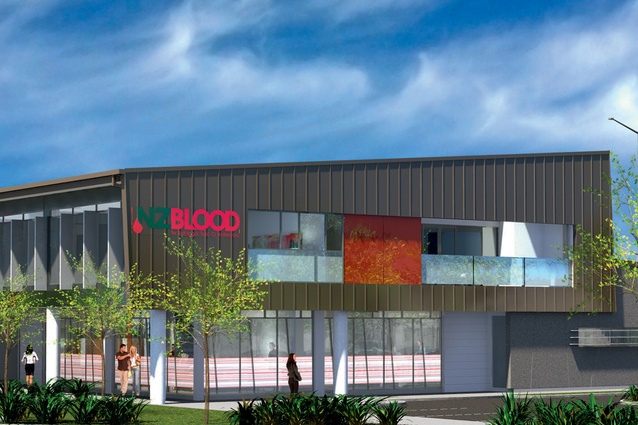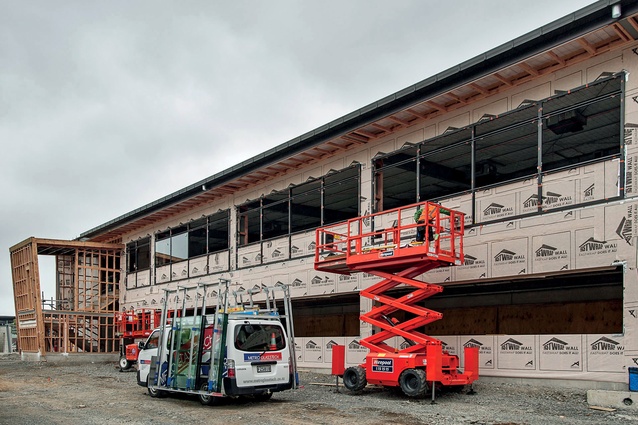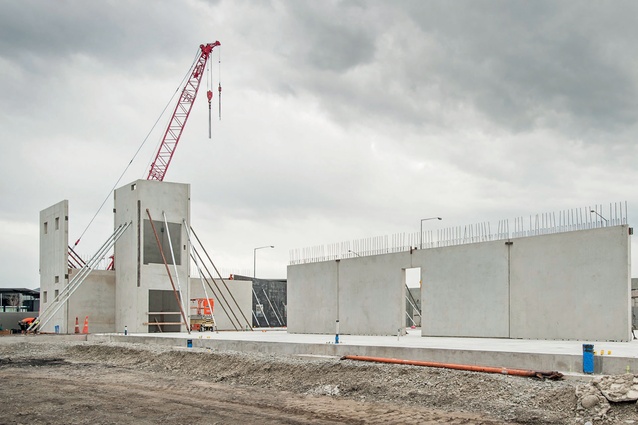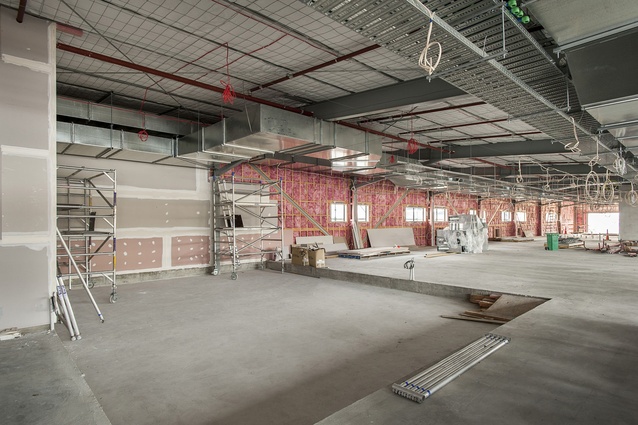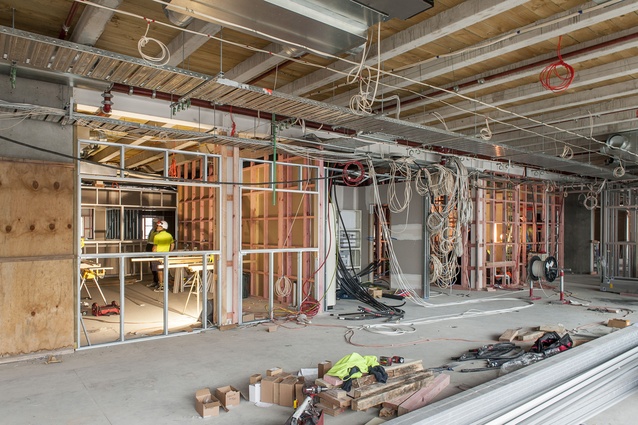Southern strength
A bit of Kiwi ingenuity and a lot of hard work has seen this building come out of the ground with little fuss. And that’s saying something. The central Christchurch site on which it sits is on the HAIL list (Hazardous Industries and Activities List), which meant there was a likelihood of it being contaminated.
The $16 million project, owned by developers Nga-iTahu Property, was specifically designed for its occupiers, the New Zealand Blood Service, as a new South Island headquarters, and was designed as an Importance Level 3 building (1.3 times the strength of the current Building Code).
The intention in the future is for the country to have two main facilities - this one in Christchurch and one in Auckland. In the case of a major catastrophe in either centre, it is proposed the remaining facility would be able to meet the needs of the whole country.
As a former railway site, there was a lot of interest throughout the ground works phase.
“We had archaeologists on site every day during ground works. We came across old wagon wheels and you could see the remains of an old railway line running through the site,” Hawkins Construction project manager Andrew Rowden said.
“It always worries you in construction when you hear the word ‘archaeological’ but the process went really smoothly on this job.”
The building sits on a gravel and concrete raft. Excavations down to 1.5 metres were undertaken, but due to the contaminated nature of the site, there was a range of testing needed to confirm where the excavated fill could be sent.“Because of this we ended up screening all the material as it came out of the ground. Solids got mixed back in with new fill from the quarry to make the gravel raft,” Rowden said.
On top of the gravel raft sits a concrete rib structure with beams that run across in a criss-cross formation. The concrete floor was poured above the foundation ribs.
“The floor was done in one pour. It is 3,500m2; it took four hours and we had 40 guys on site placing the 380m3 of concrete that went into the floor.”
To hold down the shear walls engineers from Ruamoko Solutions designed a novel methodology. “It’s a bit of innovation. Instead of traditional piling, we excavated below the gravel raft and poured concrete pads. We used reid bars to tie these pads down through the gravel raft to another set of concrete pads that we poured on top of the raft, in which the shear walls sit. So the weight of the gravel raft holds the shear walls in place.”
Ruamoko Solutions director and engineer Grant Wilkinson said because there were a lot of sites in Christchurch with soft ground conditions, including this site, it was not feasible to go down 20 metres below the ground to reach suitable material.
“Using a reinforced gravel raft under the foundations is a fairly standard solution,” Wilkinson said. “But the soft ground conditions, combined with the increased earthquake zone factor, which means we have to design for seismic events that are 36 per cent stronger than we used to, often leaves you with quite high tensions on the end of shear walls. Conventionally people would put in a tension pile to deal with that but if there was another large earthquake, you risk the raft moving down and the pile staying up. So what we do instead is put in a concrete sub-slab below the gravel raft and then we use triple-corrosion protected tension ties, which tie the upper foundation to the shear walls. It’s very simple, but it is cost effective, and provides a really good result.”
The foundation is 600mm deep, and sits on a 1200mm gravel raft, and a 300mm deep sub-slab. “That’s just over two metres below ground level; it’s a huge chunk of mass to utilise.”
All walls on the lower level of the two-storey building are precast panels, as well as some of the interior walls, the shear walls and the lift shafts.
“About 30 per cent of these panels are acid-etched black oxide panels, which the architects likened to wallpaper. Because of this we had to rethink our propping design, because these feature panels could not be handled as we normally would.
“We were very aware as well, as a result of the earthquakes, that propping design is something you can’t take for granted. We didn’t want any issues during construction if there was another seismic event.”
The exterior of the first floor is a mix of titan board, euro-tray cladding, v-rib cladding and Alpolic, bright red metal feature panels.
But it is the inside of this building where the most complex areas of construction lie, Rowden said.
Due to its future use as New Zealand Blood Service’s southern headquarters, there were very specific requirements, including nine freezers ranging in temperature from -45C to 4C, a large lift shaft measuring 3.2 by 2.5 metres, a dumb waiter, and intense servicing.
“There is a huge amount of coordination that went into the servicing and the interior. It is not everyday construction,” Rowden said.
“The freezers are in a set-down in the floor slab. Heating elements were incorporated into the set-down to keep the floor from freezing. On top of that is a layer of polystyrene, and on top of that another 100mm concrete slab. Around the outside edges, 200mm-thick Kingspan freezer panels form the walls.”
All the doors and windows of the freezers had to be custom made in Australia because they are triple glazed. Heating panels were installed within the glazing to ensure they don’t condensate.
“With the -45° freezers we had to be very careful to ensure there were no issues with areas immediately outside the freezers.”
The plant deck and room is located on the first floor, which meant services had to be fed down through the rest of the building.
“There wasn’t much space left for anything in the ceiling. It was an interesting challenge to ensure we complied with the seismic restraint regulations and allow for the right amount of space between bracing and services.”
In case of another seismic event, stringent measures were incorporated into the building design to ensure it would function and be operable following an earthquake.
Three rainwater harvesting tanks are installed at the back of the building, one of which can have foul water pumped in from a chamber in the yard if the council mains were damaged. One tank can hold fresh water should the need arise, and a diesel generator was installed that would allow the building to be powered for as long as necessary following an event.
Despite being a two-storey building, it incorporates two lifts and a dumbwaiter, for the transportation of blood products between labs. Practical completion is scheduled for early September, with the New Zealand Blood Service taking possession later this year.

